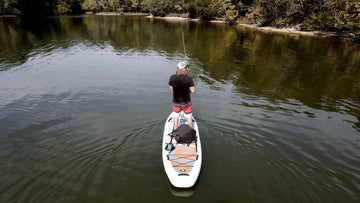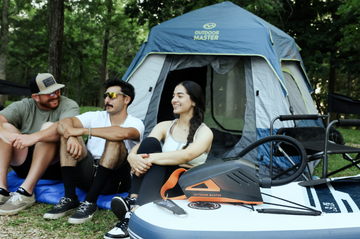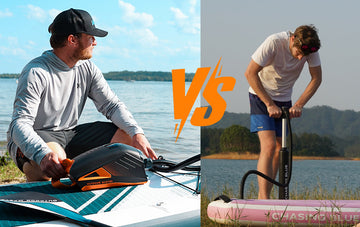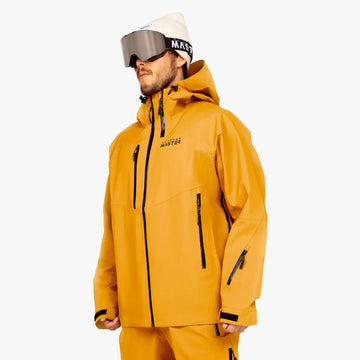 パドルボードを初めて使う場合は、初心者が犯しがちな間違いを知っておくことが重要です。
パドルボードを初めて使う場合は、初心者が犯しがちな間違いを知っておくことが重要です。
初めてのダイビングでトラブルを避け、楽しい体験をするために、これらのポイントを念頭に置いておきましょう。次回ダイビングをする際には、これらのポイントを念頭に置いておくと、より安全で楽しい体験ができるでしょう。
この記事を読み終える頃には、SUPの素材に関わらず、どのようにお手入れすればいいのか、そして万が一破損して修理が必要になった場合の対処法について、基本的な理解が深まっているはずです。今すぐ助けが必要ですか?ご安心ください。Facebook グループがあり、複数のメンターがあなたの具体的な質問に答えてくれます。さあ、参加してみましょう!
目次
1. 泳ぎ方を知らない2. 一人で、または他の人に知られずにパドリングする 3.天気予報を確認しない4. ライフガードやインストラクターの警告や指示を無視する5. ウォーミングアップをしない 6.日焼け止めを使用しない 7. アルコールを飲む 8. ライフジャケットを着用しない9. リーシュコードの使用を忘れる 10. フィンの使用を忘れる 11. パドルボードの重量制限を無視する 12. ボードの推奨空気圧を尊重しない13. 適切に水分補給しない14. 十分に食事をしない15. 周囲に注意を払わない16.浅すぎる場所でSUPパドリングをする17.急に立ち上がろうとする18.ボードの中央に立たない19.パドルを後ろ向きに持つ20.パドルのブレードの先端だけを地面につける 21.風の流れに沿って漕ぐ 22.下を向いて漕ぐ23.ボードに落ちる24.休憩や栄養補給を怠る 最後に1. 泳ぎ方がわからない
パドルボードでよくある間違いの一つは、まず泳ぎ方を学んでいないことです。パドルボードはウォータースポーツなので、万が一ボードから落ちた場合に備えて、泳ぎ方を知っておくことが重要です。
泳ぎ方がわからない場合は、パドルボードに乗る前に 1 つか 2 つの水泳レッスンを受けることをお勧めします。
2. 一人で、または他人に知られずにパドリングする

経験豊富か初心者かに関わらず、特に外洋で一人でパドルボードをする場合は、行き先と戻ってくる時間を誰かに必ず伝えてください。
緊急時に備えて携帯電話を持参しておくのも良いでしょう。
友人やグループと一緒にパドルボードに乗ることは、一人で漕ぐよりも常に安全です。
3. 天気予報をチェックしない

湖や海などの外洋で漕ぐ場合は、天気予報を確認することが特に重要です。
強風や波の予報が出ている場合は、別の日にパドルボードを楽しむのが最善です。強風の中でパドルボードを楽しむ場合は、必ず岸から離れ、常に周囲の状況に注意してください。
活用できる予測技術の一例として、 Windyが挙げられます。これは、スマートフォンやパソコンから雨量、気温、湿度、強風などの予測情報を確認できるツールです。また、選択した目的地の過去24時間分の写真を記録したウェブカメラも搭載されています。
4. ライフガードやインストラクターの警告や指示を無視する
ライフガードやインストラクターの警告や指示をよく読んでください。それを無視すれば、あなた自身が危険にさらされることになります。
5. ウォーミングアップをしない

怪我を防ぐために、あらゆる身体活動の前にウォーミングアップを行うことが重要です。
パドルボードに乗る前に、軽いストレッチや運動をして筋肉を温めておきましょう。
寒い天候でパドリングをする場合は、筋肉のけいれんを防ぐために、必ずウォーミングアップを行ってください。
SUPBoarderMag.com の役立つウォームアップ エクササイズをチェックすることをお勧めします。
6. 日焼け止めを塗らない
パドルボード中に自分自身を守るためにできる最も重要なことの 1 つは、日焼け止めを塗ることです。
外出する15~30分前に必ず日焼け止めを塗り、2時間ごとに塗り直してください。汗をかいたり泳いだりする場合は、さらに頻繁に塗り直してください。また、帽子やサングラスを着用して顔を日差しから守ることも検討してください。
紫外線に強い生地で作られた長袖とズボンを着用することも、太陽の有害な光線から肌を守る良い方法です。
7. アルコールを飲む
飲酒はいくつかの理由から避けるべきです。まず、アルコールは判断力を鈍らせ、安全にパドルを漕ぐことを困難にする可能性があります。次に、アルコールは脱水症状を引き起こす可能性があり、特に暖かい季節には危険です。最後に、パドルボードに乗っている間の飲酒は、地域によっては違法となる場合があります。
8. ライフジャケットを着用していない
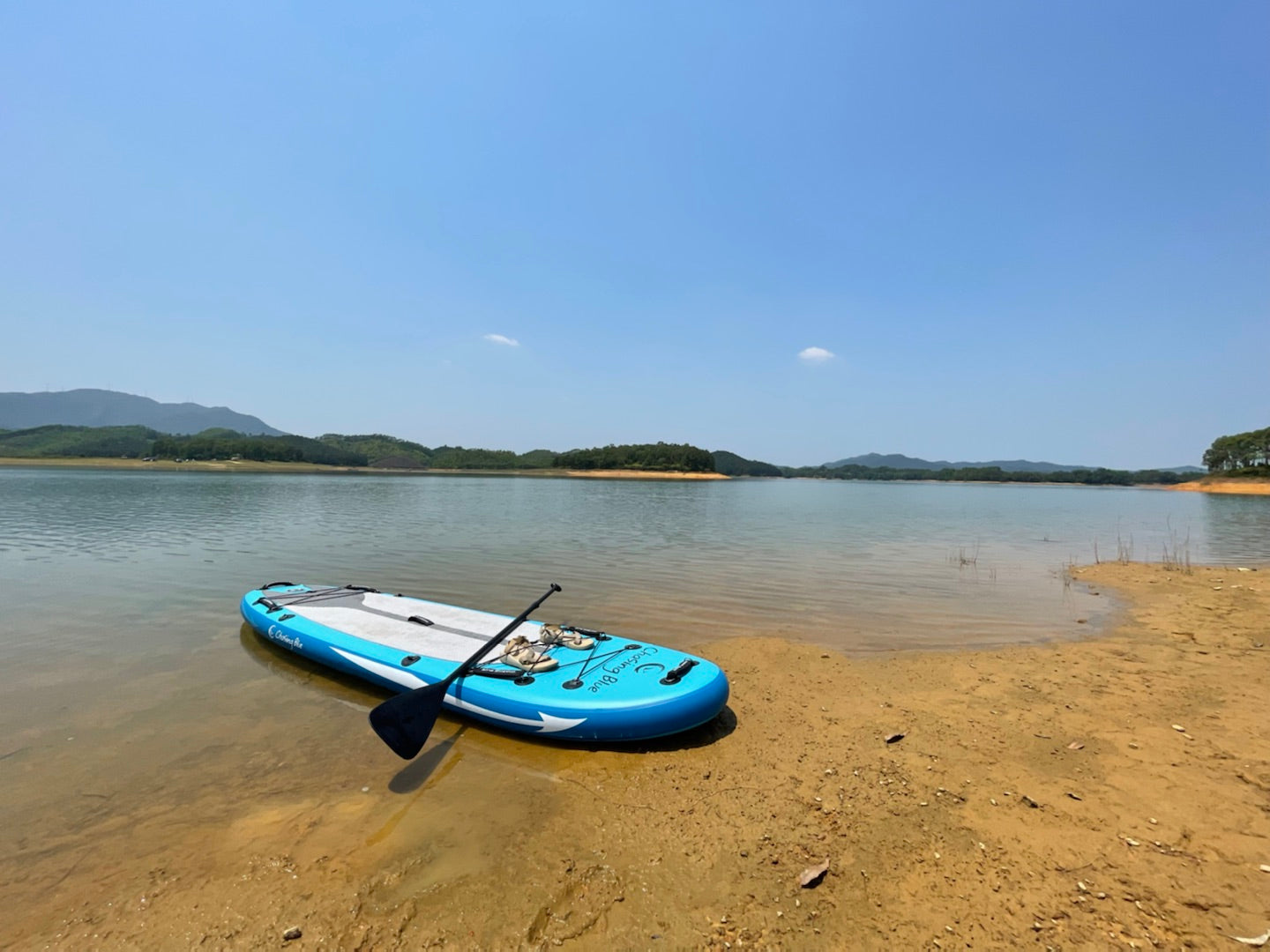
アメリカ沿岸警備隊の報告によると、 2017年のボート事故による死亡者の76%は溺死によるもので、犠牲者の84%はライフジャケットを着用していなかった。
たとえ水泳に慣れている人であっても、ライフジャケットを着用することは常に良い考えです。
実際、一部の州ではライフジャケットの着用が法律で義務付けられています。
外洋で漕ぐ場合は、他の人に簡単に見えるように、明るい色のライフジャケットを必ず着用してください。
9. リードの使用を忘れる
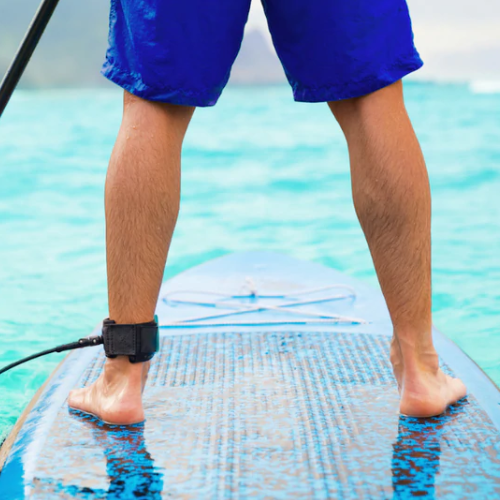
外洋でパドリングをする場合は、必ずリーシュコードを使用してください。リーシュコードとは、パドルボードを足首または手首に固定するコードのことです。
リーシュコードがあれば、万が一落水してもボードを失うことはありません。リーシュコードの長さは必ず確認しましょう。ある程度の動きができるよう十分な長さが必要ですが、足に絡まってしまうほど長くはありません。
10. フィンの使用を忘れる

パドルボードに乗っているとき、ボード上のフィンは安定感を保ち、水上で直線を保つ上で重要な役割を果たします。
フィンを使用していないと、転倒して水中に落ちる可能性が高くなります。
たとえ経験豊富な水泳選手であっても、安全を保つためにフィンを使用することが重要です。
11. パドルボードの重量制限を無視する
パドルボードに重量制限があるのには理由があります。
重量制限を超えると、パドルボードの性能が低下し、不安定になって転倒する可能性があります。
子供やペットと一緒に漕ぐ場合には、この点に特に留意することが重要です。
12. ボードの推奨空気圧を守らない
ボードの推奨空気圧を守ることが重要です。空気を入れすぎたり入れなかったりすると、ボードの性能や安定性に影響が出る可能性があります。ボードの推奨空気圧がわからない場合は、取扱説明書を確認するか、メーカーにお問い合わせください。
Outdoor Master Shark IIは、お好みのボードサイズに合わせて空気圧を設定できる電動SUPポンプです。これにより、新しいインフレータブルパドボードに空気を入れすぎてしまう心配がありません。
13. 水分補給が不十分
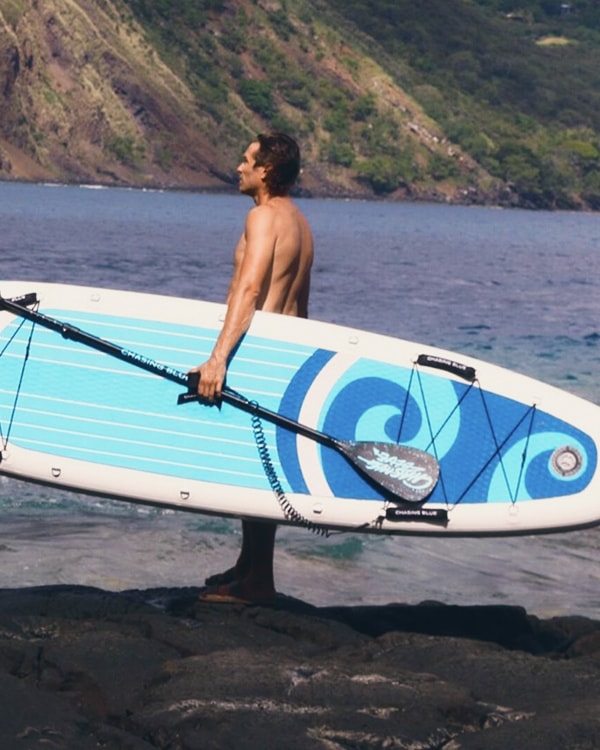
水分補給が不足すると、水泳選手はトレーニング中に早く疲労を感じ、反応時間が遅くなり、怪我のリスクが高まり、プールの内外でけいれんを起こすリスクが急激に高まります。
スイミングワールドマガジン
水分補給は、あらゆる屋外アクティビティに参加するときに不可欠ですが、パドルボードをするときは特に重要です。
パドルボードに乗る前、乗っている最中、そして乗った後には、必ず十分な水分を摂りましょう。また、水上で水分補給できるよう、ウォーターボトルやハイドレーションパックを持参することもお勧めします。
暖かい天候でパドリングをする場合は、脱水症状を防ぐためにさらに多くの水を飲んでください。
14. 十分に食べていない
水分補給と同様に、屋外でのアクティビティに参加する際には十分な食事も不可欠です。出発前に栄養価の高い食事を摂り、必要であればエネルギー補給のための軽食も持参しましょう。
パドルボードは激しい運動になる可能性があるため、体に必要なエネルギーを補給することが重要です。暖かい時期にパドルボードを漕ぐ場合は、疲労を防ぐために、さらに多めに食べるようにしてください。
15. 周囲に気を配らない
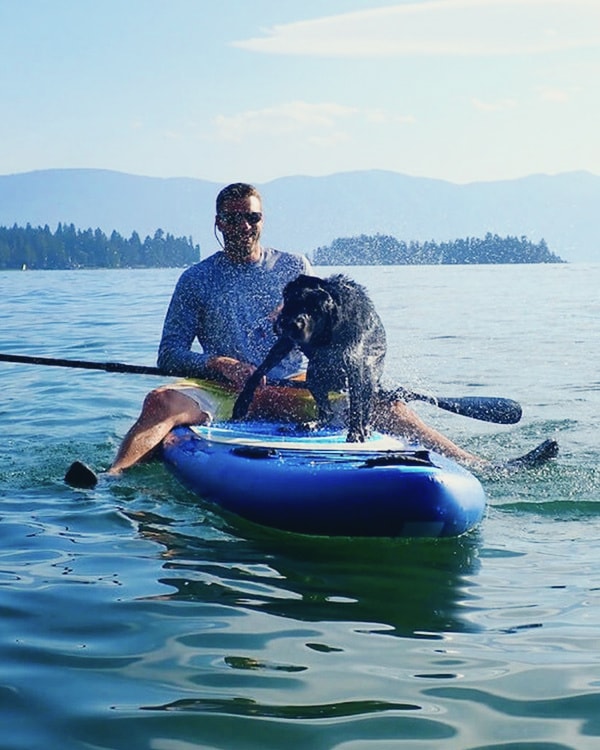
何らかの項目を説明するために使用されるキーワードまたはタグ。キーワードリスト内の複数のテキストエントリは、通常、カンマまたはプロパティの繰り返しで区切られます。
16. 浅すぎる場所でのSUPパドリング
これは特に初心者によくある間違いです。浅瀬でのパドルボードは、転落すると頭を底にぶつける可能性があるため、危険です。
パドルボードは、少なくとも腰までの深さの水で楽しむことをお勧めします。そうすることで、ボードから落ちた場合でも怪我を防ぐことができます。
17. 急に立ち上がろうとする
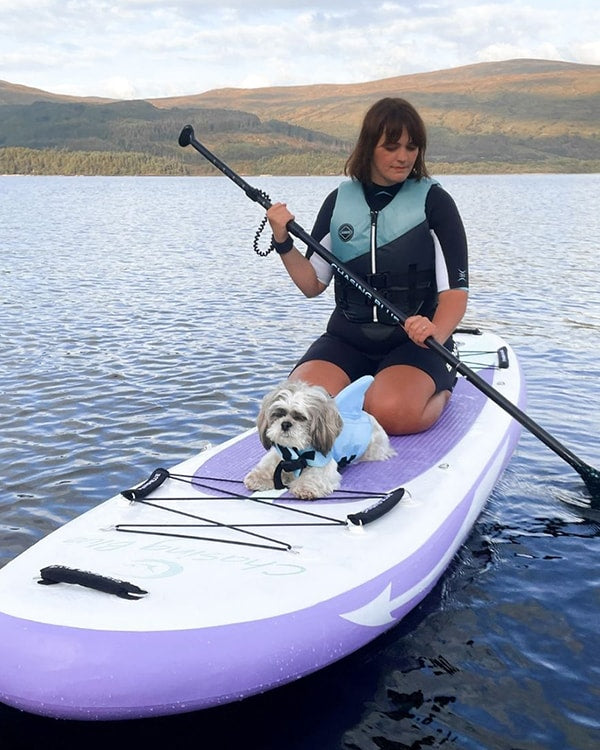
急に立ち上がるとバランスを崩してボードから落ちてしまう可能性があります。ゆっくりと慎重に立ち上がることをお勧めします。足を肩幅に開き、膝を曲げた状態を保ちましょう。ふらつき始めたら、バランスが取れるまで膝をついて座り直しましょう。
18. ボードの中央に立たない
ボードの中央に立つと、バランスを保ちやすく、コントロールしやすくなります。片側に立つと、バランスを崩して転倒する可能性が高くなります。
足を肩幅に開き、ボードの両側に体重を均等に分散させて立つことをお勧めします。動き回る必要がある場合は、ゆっくりと慎重に行ってください。
19. パドルを後ろ向きに持つ
パドルボードでよくあるミスの一つは、パドルを後ろ向きに持つことです。パドルを後ろ向きに持つと、漕ぎにくくなるだけでなく、怪我をするリスクも高まります。
パドルを正しく持つと、より効率的にパドルを漕ぐことができ、怪我をするリスクも軽減されます。
Outdoor Master SUP パドル (カーボンファイバーとステンレススチール) には、前側にロゴがあり、正しい持ち方が簡単になります。
20. パドルブレードの先端だけを植える
パドリングをする際は、パドルのブレード全体を水中に沈めることが重要です。ブレードの先端だけを水中に沈めると、十分なパワーを発揮できません。
21. 風の吹くままに
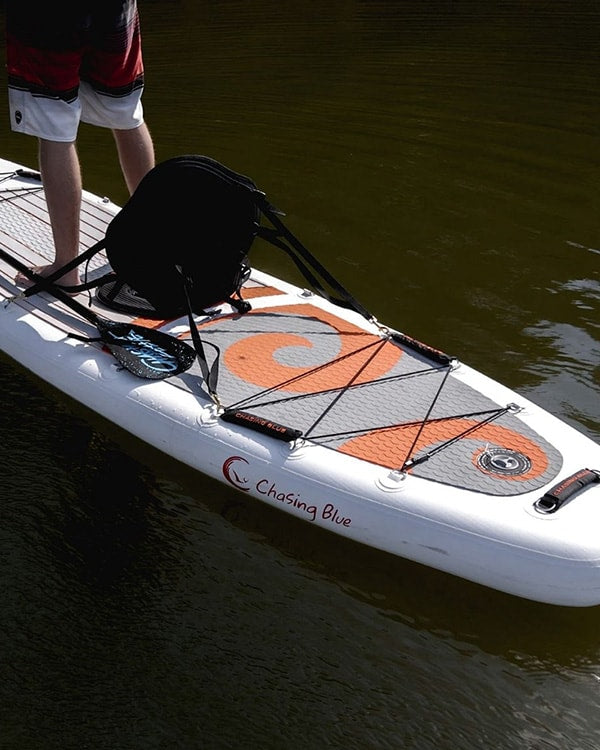
風に注意を払うことは重要ですが、風に左右されて漕ぐ方向を決めてはいけません。まずは風上に向かって漕ぎ、その後向きを変えて風を背にして漕ぎましょう。
これにより、コースから外れたり、ずっと風と戦わなければならなくなったりすることがなくなります。
22. パドリング中に下を向く
パドリング中に下を見るとバランスを崩してボードから落ちる恐れがあります。
頭を上げて、視線を地平線に向けることをお勧めします。そうすることでバランスを保ち、コントロールしやすくなります。何らかの理由で下を見る必要がある場合は、ゆっくりと慎重に行ってください。
23. ボードに落ちる
ボードに落ちると、頭を打ったり、何かを壊したりする可能性があるため、危険です。ボードの横に落ちることをお勧めします。そうすることで怪我を防ぐことができます。
24. 休息とエネルギー補給の時間を取らない
パドルボードを1時間ほど楽しんだ後は、休憩してエネルギーを補給することが大切です。十分な水を飲み、軽食を食べてエネルギーを補給しましょう。暖かい時期にパドルボードを楽しむ場合は、脱水症状を防ぐために、さらに頻繁に休憩を取り、水分を多く摂るようにしてください。
パドルボードは素晴らしい運動ですが、自分の体に耳を傾け、必要に応じて休憩を取ることが重要です。
最終的な考え

これらのヒントがお役に立てば幸いです!パドルボードは、年齢やスキルレベルを問わず、どなたでも楽しめる素晴らしいアクティビティです。安全に、そして楽しく!
ぜひ当社のSUP Facebook グループに参加してください。フレンドリーなスタッフと SUP スペシャリストが、初心者のあなたに必要なサポートとヘルプを提供します。


